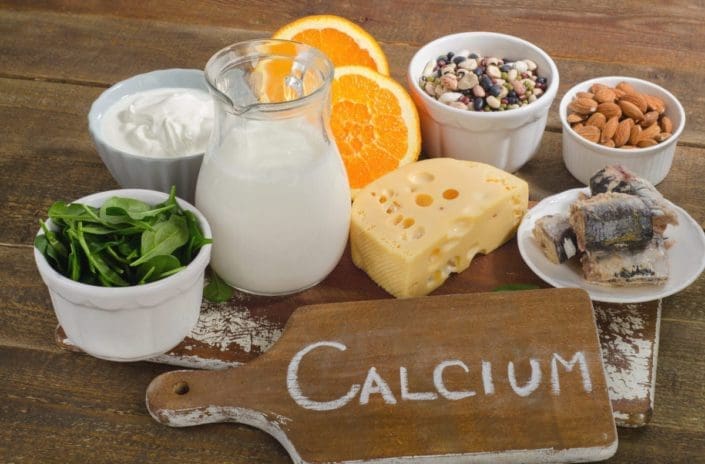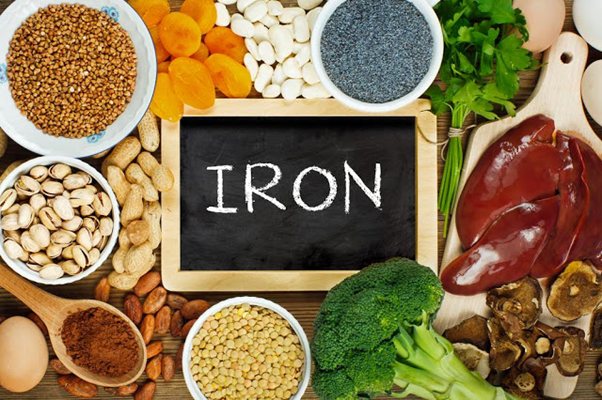ESSENTIAL NUTRIENTS - MINERALS FAO
 •
by
•
by ltandehui
SOURCE AND MORE INFO: http://www.fao.org/docrep/field/003/ab470e/ab470e06.htm
ESSENTIAL NUTRIENTS - MINERALS FAO

***6.1 Introduction and classification***
With the exception of the organically bound elements hydrogen, carbon, nitrogen and oxygen, there are about 20 or so inorganic mineral elements which are considered to be essential to animal life, including fish and shrimp. The essential mineral elements are usually classified into two main groups according to their concentration in the animal body; the macroelements and the microelements
Beautiful people

***6.2 General function***
he general function of minerals and trace elements can be summarised as follows:
Minerals are essential constitutents of skeletal structures such as bones and teeth.
Minerals play a key role in the maintenance of osmotic pressure, and thus regulate the exchange of water and solutes within the animal body.
Minerals serve as structural constituents of soft tissues.
Minerals are essential for the transmission of nerve impulses and muscle contraction.
Minerals play a vital role in the acid-base equilibrium of the body, and thus regulate the pH of the blood and other body fluids.
Minerals serve as essential components of many enzymes, vitamins, hormones, and respiratory pigments, or as cofactors in metabolism, catalysts and enzyme activators.

EXAMPLE THE MINERALS:
***6.3 Macroelements***

**6.3.1 Calcium**
Biological function: The principal biological functions of calcium may be summarised as follows;
Calcium is an essential component of bone, cartilage and the crustacean exoskeleton.
Calcium is essential for the normal clotting of blood, by stimulating the release of thromboplastin from the blood platelets.
Calcium is an activator for several key enzymes, including pancreatic lipase, acid phosphatase, cholinesterase, ATPases, and succinic dehydrogenase.
Through its role in enzyme activation, calcium stimulates muscle contraction (ie. promotes muscle tone and normal heart beat) and regulates the transmission of nerve impulses from one cell to another through its control over acetylcholine production.
Calcium, in conjunction with phospholipids, plays a key role in the regulation of the permeability of cell membranes and consequently over the uptake of nutrients by the cell.
Calcium is believed to be essential for the absorption of vitamin B12 from the gastro-intestinal tract.
Dietary sources and absorption: Rich dietary sources of calcium include limestone, oystershell grit, bone meal, rock phosphate (40–30😵
; crab meal, shrimp meal, meat and bone meal (20–10😵
; white fish meal, poultry manure, meat meal (10–5😵
; and brown fish meal, delactose whey powder, dried skim milk, poultry by-product meal, kelp meal, alfalfa meal (5–1😵
.
Calcium is readily absorbed through the gastro-intestinal tract (through vitamin D3 action), gills, skin and fins of fish and crustacea. In general, dietary calcium absorption is facilitated by dietary lactose (by forming a soluble sugar-calcium complex) and by high gastric acidities (by aiding solubilization of the calcium salt).

***6.3.2 Phosphorus***
Biological function: The principal biological functions of phosphorus may be summarized as follows;
Phosphorus is an essential component of bone, cartilage and the crustacean exoskeleton.
Phosphorus is an essential component of phospholipids, nucleic acids, phosphoproteins (casein), high energy phosphate esters (ATP), hexose phosphates, creatine phosphate, and several key enzymes.
As a component of these important biological substances, phosphorus plays a central role in energy and cell metabolism.
Inorganic phosphates serve as important buffers to regulate the normal acidbase balance (ie. pH) of animal body fluids.
Dietary sources and absorption: Rich dietary sources of phosphorus include rock phosphate, dicalcium phosphate, bone meal (20–10% P); meat and bone meal, meat meal, white fish meal, shrimp meal, poultry by-product meal, dried poultry manure (5–2😵
; and rice bran, rice polishings, wheat bran, wheat mill run, dried brewers yeast, sunflower seed meal, cottonseed meal, rapeseed meal, sesame seed meal, dried delactose whey (2–1😵
.
Although soluble phosphorus salts can be absorbed through the skin, fins and gills of fish and shrimp, the concentration of phosphorus in fresh and sea water is low, and consequently body phosphorus requirements are usually met from dietary sources. Within plant foods, including cereals and oilseeds, 50–80% of the phosphorus occurs in the form of the calcium or magnesium salt of phytic acid; phytic acid being the hexaphosphate ester of inositol. This organic form of phosphorus must first be hydrolyzed within the gastro-intestinal tract by the enzyme phytase to inositol and phosphoric acid before it can be utilized and absorbed by the animal. As with calcium, the absorption of inorganic phosphorus salts is facilitated by high gastric acidity; the more soluble the salt the higher the availability and absorption of phosphorus.6.4 Microelements

***6.4.1 Iron***
Biological function: The principal biological functions of iron may be summarised as follows;
Iron is an essential component of the respiratory pigments haemoglobin and myoglobin.
Iron is an essential component of various enzyme systems including the cytochromes, catalases, peroxidases, and the enzymes xanthine and aldehyde oxidase, and succinic dehydrogenase.
As a component of the respiratory pigments and enzymes concerned in tissue oxidation, iron is essential for oxygen and electron transport within the body.
Dietary sources and absorption: Rich dietary sources of iron include; blood meal (0.3–0.2% Fe); kelp meal, coconut meal, meat and bone meal, sunflower seed meal, dried distillers solubles (1000–500 mg/kg); alfalfa meal, crab meal, condensed fish solubles, fish meal, meat meal, poultry by-product meal, linseed meal, dried brewers yeast, dehydrated cane molasses, rice bran, delactose whey powder, and dried poultry manure (500–200 mg/kg).
Iron is readily absorbed through the gastro-intestinal tract, gills, fins and skin of fish and crustacea. Dietary iron availability and absorption is usually depressed by high dietary intakes of phosphate, calcium, phytates, copper and zinc. In general, inorganic sources of iron are more readily absorbed than organic sources; the ferrous iron (Fe++) being more available for absorption than ferric iron (Fe+++). Reducing substances such as vitamin C enhance the absorption of non-haem iron.

***6.4.2 Zinc***
Biological function: The principal biological functions of zinc may be summarised as follows;
Zinc is an essential component of more than 80 metalloenzymes, including carbonic anhydrase (required for the transport of carbon dioxide by the blood and for the secretion of HCI in the stomach), glutamic dehydrogenase, alkaline phosphatase, pyridine nucleotide dehydrogenase, alcohol dehydrogenase, superoxide dismutase, pancreatic carboxypeptidase, and tryptophan desmolase.
Zinc serves as a cofactor in many enzyme systems, including arginase, enolase, several peptidases, and oxalacetic decarboxylase.
As an active component or cofactor for many important enzyme systems zinc plays a vital role in lipid, protein, and carbohydrate metabolism; being particularly active in the synthesis and metabolism of nucleic acids (RNA) and proteins.
Although not proven, it has been suggested that zinc plays a role in the action of hormones such as insulin, glucagon, corticotrophin, FSH and LH.
Zinc is believed to play a positive role in wound healing.
Dietary sources and absorption: Rich dietary sources of zinc include chick hatchery meal (0.15% Zn), dried Candida yeast, dehydrated fish solubles, dried distillers grains with solubles, dried poultry manure (500–200 mg/kg); fish meal, corn gluten meal, poultry by-product meal, wheat bran, rice mill run, dehydrated cattle manure, wheat middlings, crab meal, sunflower seed meal, dried torula yeast (200–100 mg/kg Zn).
Zinc is readily absorbed from the gastro-intestinal tract, gills, fins and skin of fish and crustacea. Dietary zinc availability and absorption is reduced in the presence of phytates, and high dietary intakes of calcium, phopshorus and copper.

I You do Like mY ARTICLE?


Comments
!!
o7
o7
O/
o7
3
O7
5
+1
Compi Thanks!
o/
7/24
I like this article. Full vote.
😃 Thanks Mate!
A bit too long and not enough simplified, but it's still good to talk about the subject 😉
Hay Mucho que rescatar verdad? En los minerales hay unos numerillos E.C EJemplo : EN el 6.3.2 Phosphorus; esos numeros indican la ruta metabolica que toma cada uno más sí es un cofactor: Antagonista o Agonista 😛
You could write books about the subject, but you're on eRepublik, you need to simplify a lot, and keep things short 😁, specially for important subjects like this
http://68.media.tumblr.com/ea763f4a1a6a54d87d1a4006da68ab6f/tumblr_otrtyvJzMB1s7km96o1_400.gif
Cronos !
How did I survive?
Cómo sobrevivio el Man?
Seems impossibile. Fake?
nice
hukh
I feel healthy after reading this article xD
O7 And Ready for HR! 😃 O/
Votado, me encantan los artículos de comida! (?)
Se viene uno de pizza 😮 amigo Profeta -1
o.O PIZZA?????? 🍕
¿khomo lo zupho? :dude:
Tú, eres poeta! 😒 El proximo articulo es sobre la receta para hacer piza! jeje
OH! ahora tengo mas :dudes: ....
Debi decir que tú boca fue de Profeta xD
😮 BOCA??? 😮 😮 😮
BOCA no, he escrito boca; no me vallas a decir BOCA Juniors xD
😮 😮 brujería!! O.o
o7
o7
too healthy for me. Going to mcdonalds, brb
Voted 🙂
v
V+
V
o7
o/
v
Baaaaaa
many thanx
V!